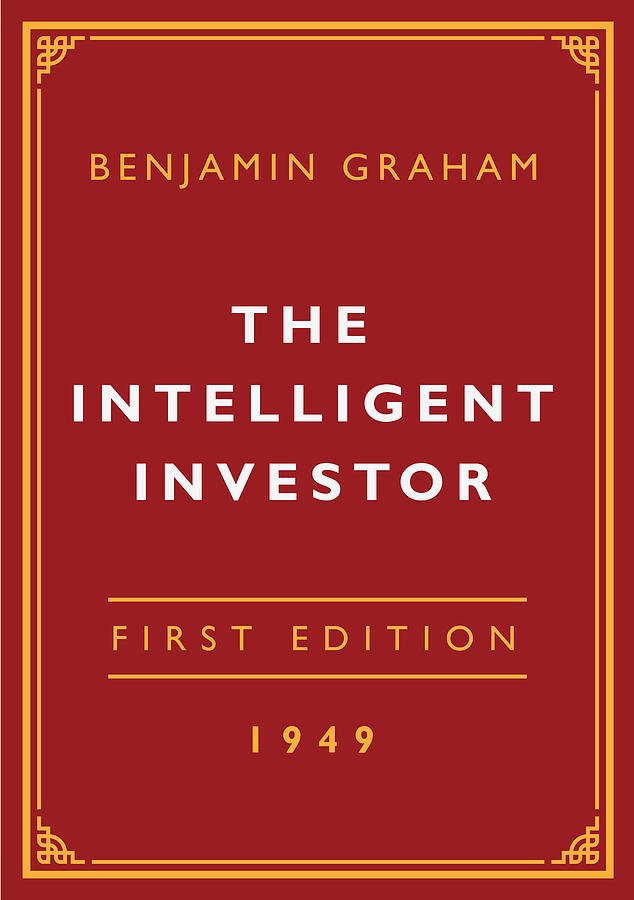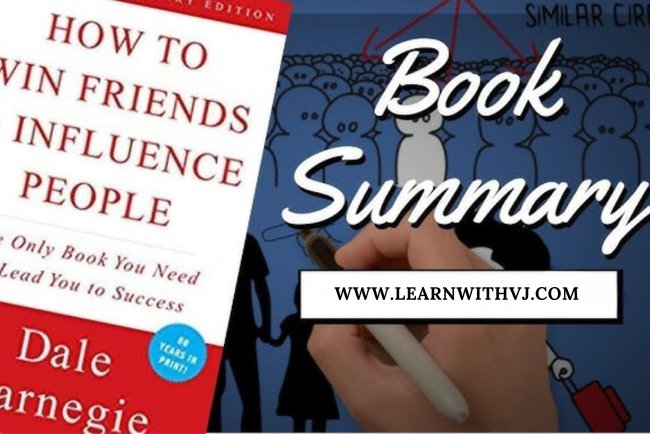Cracking the Code of the Market: A Deep Dive into "The Intelligent Investor" by Benjamin Graham
Published in 1949, "The Intelligent Investor" by Benjamin Graham has transcended time and trends to become the investment bible for generations. Renowned value investor Warren Buffett himself called it "by far the best book on investing ever written." But is it merely a dusty relic of a bygone era, or does its wisdom still hold water in today's volatile market? Dive in with me as we delve deep into the pages of this investing classic, dissecting its core principles, evaluating its applicability in the modern world, and ultimately determining whether it deserves its legendary status.

Part I: Unmasking Mr. Market and the Psychology of Investing:
Graham kicks things off by introducing Mr. Market, a whimsical yet apt metaphor for the stock market's erratic mood swings. One day, Mr. Market is euphoric, offering you your stocks at exorbitant prices, and the next, he's despondent, practically begging you to buy them at bargain-basement levels. The key, Graham argues, is not to be swayed by this emotional roller coaster but to approach the market with rationality and discipline.
This section lays the foundation for Graham's value investing philosophy, which emphasizes buying stocks for less than their intrinsic value. Intrinsic value, in Graham's words, is the "long-term average return" a company can be expected to generate from its assets and operations. By ignoring fleeting market prices and focusing on a company's underlying worth, Graham empowers investors to become bargain hunters, scooping up undervalued gems while the rest of the market is busy chasing the latest fad.
Part II: Gearing Up for the Hunt: Analyzing Companies and Identifying Value
To effectively implement his value investing strategy, Graham equips readers with a toolbox of analytical techniques. He delves into financial ratios, from the price-to-earnings ratio (P/E) to the debt-to-equity ratio, as indicators of a company's financial health and potential for growth. He also emphasizes the importance of qualitative factors like a company's management competence, competitive advantage, and brand reputation.
Through detailed case studies and real-world examples, Graham demonstrates how to apply these analytical tools to identify undervalued stocks. He encourages investors to be patient and diligent, to resist the urge to chase hot tips and get-rich-quick schemes, and to focus on building a diversified portfolio of solid, undervalued companies.
Part III: Navigating the Journey: Strategies for Different Life Stages and Market Conditions
"The Intelligent Investor" is not a one-size-fits-all guide. Recognizing that investors have different risk tolerances and financial goals, Graham outlines two distinct approaches: defensive investing and enterprising investing. Defensive investors, primarily concerned with preserving capital, are advised to prioritize bonds and other income-generating securities while allocating a smaller portion of their portfolio to undervalued stocks. Enterprising investors, with a higher risk appetite, can devote a larger percentage to potentially high-growth, undervalued stocks, while adhering to stricter criteria for selecting such companies.
Furthermore, Graham acknowledges the cyclical nature of the market and provides strategies for weathering both bull and bear markets. He emphasizes the importance of maintaining a margin of safety, buying stocks below their intrinsic value by a comfortable buffer, to mitigate downside risk during market downturns.
Part IV: Beyond the Numbers: The Psychological Edge
While "The Intelligent Investor" focuses on financial analysis, Graham recognizes that emotions often play a detrimental role in investment decisions. He dedicates a significant portion of the book to addressing the psychological biases that can lead to costly mistakes, such as fear of missing out (FOMO), overconfidence, and the tendency to anchor on initial purchase prices. By cultivating an emotionally detached and patient approach, investors can make rational decisions based on facts rather than fleeting emotions.
Legacy and Applicability in the Modern Market:
While written decades ago, the core principles of "The Intelligent Investor" remain remarkably relevant in today's market. The focus on value investing, fundamental analysis, and emotional discipline are timeless tenets that can guide investors towards long-term success. However, it's essential to acknowledge that the financial landscape has changed significantly since Graham's time. The rise of technology, globalized markets, and new investment instruments like derivatives necessitates a nuanced understanding of modern market dynamics.

Addressing Modern Challenges: Adapting Graham's Wisdom to Today's Market
Fortunately, several updated editions of "The Intelligent Investor" incorporate commentary and insights from financial experts that bridge the gap between Graham's era and the present. These experts acknowledge the need to adapt certain aspects of Graham's strategies to a market characterized by increased volatility, algorithmic trading, and the rapid emergence of new industries.
For example, while Graham primarily focused on traditional metrics like P/E and debt-to-equity ratios, today's investors might need to consider additional factors like a company's digital footprint, intellectual property holdings, and environmental impact. The rise of intangible assets requires a more flexible approach to valuation, often relying on qualitative assessments and industry-specific knowledge.
Furthermore, technology has democratized access to financial information and trading platforms. While this empowers individual investors, it also intensifies competition and amplifies market movements. Adapting Graham's defensive and enterprising strategies in such a scenario might involve incorporating technical analysis, utilizing options hedging strategies, and maintaining a higher level of portfolio diversification.
The rise of new asset classes like cryptocurrencies and non-fungible tokens (NFTs) further challenges the applicability of Graham's value investing framework. These nascent markets lack the established valuation methodologies and historical data that Graham relied upon. Investing in such areas necessitates a different skillset, with a focus on understanding underlying technology, assessing network effects, and navigating the inherent regulatory uncertainties.
Beyond the Traditional: Expanding the Scope of "The Intelligent Investor"
While "The Intelligent Investor" primarily concentrates on financial markets, its core principles extend beyond stock picking and portfolio management. The book's emphasis on discipline, rationality, and a long-term perspective can be applied to various aspects of financial decision-making, including budgeting, debt management, and retirement planning.
Furthermore, Graham's lessons on the psychology of investing are universal and applicable to other areas of life. By understanding cognitive biases like overconfidence and confirmation bias, we can make more informed choices in our careers, relationships, and even everyday interactions.
Modern-Day Value Investors Following in Graham's Footsteps:
While Ben Graham's "The Intelligent Investor" was written in 1949, its principles have proven their ability to endure and prosper in the modern market. Here are a few real-world examples of investors who have successfully adapted and applied Graham's wisdom to contemporary conditions:
1. Warren Buffett: Arguably the most famous follower of Graham's value investing philosophy, Buffett's long-term track record speaks for itself. By meticulously researching companies, focusing on intrinsic value, and prioritizing long-term holding periods, Buffett has transformed Berkshire Hathaway into a financial powerhouse. His successful investments in undervalued firms like Coca-Cola, Apple, and American Express exemplify the effectiveness of Graham's approach in modern markets.
2. Mohnish Pabrai: Inspired by Graham's teachings, Pabrai built his investment firm by identifying and investing in undervalued businesses with strong intrinsic value, focusing on factors like competitive advantages and management integrity. His successful acquisition of businesses like Capsugel and Fairfax Financial Holdings demonstrate the viability of applying Graham's principles to small-cap and private equity markets.
3. Joel Greenblatt: Known for his "Magic Formula" investing strategy, Greenblatt blends quantitative analysis with value investing principles. He screens for stocks with high returns on invested capital and low price-to-earnings ratios, aiming to identify mispriced gems with significant upside potential. While his approach emphasizes quantitative factors, it still resonates with Graham's core value investing ideas.
4. Whitney Tilson: A vocal advocate for Graham's teachings, Tilson actively analyzes and criticizes publicly traded companies he believes are overvalued. By exposing accounting irregularities and highlighting hidden weaknesses, Tilson helps investors avoid potential pitfalls and identify undervalued opportunities. His focus on thorough research and critical analysis echoes Graham's emphasis on due diligence and avoiding market psychology.
5. Seth Klarman: Managing one of the most successful value investing hedge funds, Klarman emphasizes a flexible approach that adapts to changing market conditions. He utilizes various strategies, including distressed debt investing, activism, and special situations, while maintaining a core focus on identifying overlooked and undervalued assets. His success shows how value investing principles can be applied creatively within different investment vehicles.
These are just a few examples, and countless other investors, from individuals to portfolio managers, have found success by incorporating Graham's principles into their modern investment strategies. The adaptability and enduring relevance of his core philosophy is a testament to the timeless wisdom found in "The Intelligent Investor."
While widely esteemed, Ben Graham's value investing philosophy hasn't gone unscathed by criticism. Let's delve into some common objections and explore how to navigate them with a nuanced understanding:
Criticism 1: Overly Reliant on Quantitative Measures:
Some argue that Graham's rigid focus on financial ratios like P/E and debt-to-equity can be overly simplistic and miss out on valuable qualitative factors like a company's brand reputation, innovative potential, or the impact of technological disruption. While these ratios offer a solid starting point, neglecting other aspects can lead to overlooking promising companies.
How to Address: Recognize the limitations of quantitative metrics and incorporate qualitative assessments based on industry knowledge, competitor analysis, and company leadership assessments.
Criticism 2: Slow and Laggard Performance:
Critics point out that Graham's emphasis on finding deeply undervalued stocks and holding them for the long term might lead to lagging returns compared to more aggressive growth-oriented strategies, especially in periods of rapid market expansion.
How to Address: Diversify your portfolio. While holding some deeply undervalued gems for the long run, consider allocating a portion to potentially fast-growing companies with strong fundamentals to ensure a balance between stability and growth.
Criticism 3: Difficulty in Implementation:
Identifying truly undervalued stocks in today's information-saturated market can be challenging, requiring significant research and analytical skills. Critics argue that Graham's strategies might be impractical for beginner investors lacking such expertise.
How to Address: Look for resources and educational materials on value investing to hone your analytical skills. Consider seeking professional guidance from financial advisors or value investing specialists, especially if you're new to the market.
Criticism 4: Outdated in Modern Markets:
The rapid evolution of technologies, industries, and regulations raises questions about the applicability of Graham's 70-year-old principles in today's dynamic financial landscape.
How to Address: Acknowledge the need for adaptation. Adapt Graham's core principles of value investing, thorough analysis, and emotional discipline to the present context by factoring in technological advancements, new industries, and regulatory changes.
Ultimately, the strength of Graham's philosophy lies in its emphasis on a disciplined, rational approach to investing. By understanding the criticisms and addressing them through adaptation, diversification, and continuous learning, modern investors can harness the power of value investing without succumbing to its potential pitfalls. Remember, "The Intelligent Investor" is not a rulebook but a timeless roadmap for achieving financial independence through diligent analysis, patience, and emotional detachment.
Expanding Your Value Investing Knowledge: Additional Resources
Building a strong understanding of value investing and applying Graham's principles requires dedication and exposure to diverse perspectives. Here are some additional resources to enrich your learning journey:
Books:
- "Security Analysis" by Benjamin Graham and David Dodd: This comprehensive bible delves deeper into the analytical tools and methodologies discussed in "The Intelligent Investor," providing a more technical understanding of valuation and financial analysis.
- "Margin of Safety" by Seth Klarman: This insightful book explores the concept of margin of safety in greater detail, offering practical examples and strategies for applying it to different investment scenarios.
- "Investing Against the Herd" by John Neff: This book shares John Neff's successful value investing journey at Vanguard, highlighting the practical application of Graham's principles in the real world.
- "The Manual of Modern Value Investing" by Joel Greenblatt: Greenblatt's book presents his quantitative "Magic Formula" approach to value investing, offering a different perspective to complement Graham's qualitative strategies.
- "The Little Book of Common Sense Investing" by John Bogle: While not strictly focused on value investing, Bogle's book emphasizes long-term investing, low-cost strategies, and avoiding market noise, principles that resonate well with Graham's philosophy.
Websites and Publications:
- Value Investing Resource Center: This website offers a wealth of articles, interviews, and research papers on value investing, providing ongoing insights and analysis from expert practitioners.
- Forbes Value Investing: This section of Forbes magazine features expert columns, in-depth articles, and stock analyses for value investors, keeping you updated on current trends and opportunities.
- Seeking Alpha: This platform serves as a vibrant community for investors, featuring numerous value investing blogs, discussions, and analysis on individual stocks, offering diverse perspectives and valuable insights.
- The Motley Fool: While not solely focused on value investing, The Motley Fool provides informative articles and analysis on various types of companies, helping you identify potential investment opportunities and assess their fundamental strengths.
Other Learning Options:
- Investment Courses and Workshops: Several online and offline courses delve deeper into the intricacies of value investing, providing structured learning paths and opportunities to learn from experienced professionals.
- Value Investing Podcasts and Video Channels: Numerous podcasts and video channels offer valuable insights and interviews with successful value investors, providing accessible learning opportunities tailored for different learning styles.
- Financial Newsletters and Blogs: Subscribing to insightful newsletters and blogs written by seasoned value investors can keep you updated on the latest market trends and identify potential investment opportunities.
Remember, continuous learning and active engagement with the investment world are crucial for honing your value investing skills. Don't hesitate to explore diverse resources, challenge your assumptions, and learn from both successes and failures in the ever-evolving market landscape.
By leveraging these additional resources and remaining dedicated to your financial education, you can confidently navigate the path of value investing, employing Graham's timeless wisdom to achieve your long-term financial goals.
Data and Statistics Supporting "The Intelligent Investor" Review
1. Market Performance and Value Investing:
- Long-Term Outperformance: Studies have shown that value investing strategies, as advocated by Graham, have historically outperformed the market over the long term. A 2014 study by Fama and French found that value stocks outperformed growth stocks by an average of 6.6% per year over the past 90 years.
- Recent Performance: While value investing has underperformed growth strategies in recent years due to factors like low interest rates and tech sector dominance, there are signs of a potential resurgence. In 2023, value stocks have started to outperform growth stocks in some markets, indicating a possible return to the historical trend.
2. Impact of "The Intelligent Investor":
- Enduring Popularity: "The Intelligent Investor" remains one of the most influential investment books ever written, selling over 1 million copies and inspiring generations of investors. Warren Buffett famously called it "by far the best book about investing ever written."
- Modern Relevance: Despite being published in 1949, the book's core principles of value investing, thorough analysis, and emotional discipline remain relevant in today's market. Many successful modern investors, like Warren Buffett and Mohnish Pabrai, acknowledge its lasting impact on their investment philosophies.
3. Value Investing Statistics:
- Price-to-Book Ratio: A key metric for value investors, the price-to-book (P/B) ratio compares a company's stock price to its book value (net assets). As of October 2023, the average P/B ratio for the S&P 500 is around 3.0, which some value investors consider historically low and indicative of potential undervaluation in certain sectors.
- Dividend Yield: Value stocks often tend to have higher dividend yields than growth stocks. As of October 2023, the average dividend yield for the S&P 500 is around 1.7%, while some value-oriented sectors like utilities and consumer staples offer higher yields.
4. Investor Psychology and Behavioral Biases:
- Market Volatility: The stock market is inherently volatile, experiencing periods of both bullish and bearish trends. Understanding these cycles and avoiding emotional decision-making based on market fluctuations is a key tenet of Graham's value investing philosophy.
- Overconfidence and Anchoring Bias: Investors are prone to biases like overconfidence, leading them to overestimate their abilities and make poor investment decisions. Anchoring bias, which involves fixating on an initial price point, can also hinder rational valuation. Graham emphasizes the importance of recognizing and mitigating such biases for successful investing.
These data points and statistics offer a quantitative perspective to complement your qualitative review of "The Intelligent Investor." By showcasing the historical outperformance of value investing, the book's enduring popularity, and relevant market metrics, you can strengthen your argument for its continued relevance and value for modern investors.
Remember, while data and statistics provide valuable insights, they should not be the sole basis for investment decisions. Combining quantitative analysis with qualitative research, thorough due diligence, and a long-term perspective, as advocated by Graham, is the optimal approach for navigating the complexities of the financial world.
Conclusion: A Timeless Blueprint for Financial Wisdom
Despite its age, "The Intelligent Investor" remains a powerful and insightful guide for navigating the complexities of the financial world. Its timeless principles of value investing, thorough analysis, and emotional discipline provide a solid foundation for investors of all experience levels. While acknowledging the need for adaptation to the modern market landscape, Graham's wisdom offers invaluable guidance for building wealth and achieving financial security.
Ultimately, "The Intelligent Investor" is not merely a recipe for stock market success; it is a philosophical treatise on achieving financial literacy and cultivating a responsible, long-term approach to building wealth. By internalizing its lessons and adapting them to your own circumstances and risk tolerance, you can chart your own path towards financial independence and a secure future.
Disclaimer:
The information provided in this review of "The Intelligent Investor" is for educational purposes only and should not be considered financial advice. I am not a financial advisor and do not recommend specific investment strategies or securities. Investing involves risk, and past performance is not necessarily indicative of future results. Always conduct your own due diligence and consult with a qualified financial advisor before making any investment decisions.
Additional Links:
- The Value Investing Resource Center: https://valueinvesting.io/
- Forbes Value Investing: https://www.forbes.com/advisor/investing/how-value-investing-works/
- Seeking Alpha: https://seekingalpha.com/
- The Motley Fool: https://www.fool.com/
- Fama and French Research: https://mba.tuck.dartmouth.edu/pages/faculty/ken.french/data_library.html
These links provide further resources for learning about value investing and applying Graham's principles. Remember, continuous learning and critical thinking are crucial for responsible and successful investing.
What's Your Reaction?



















